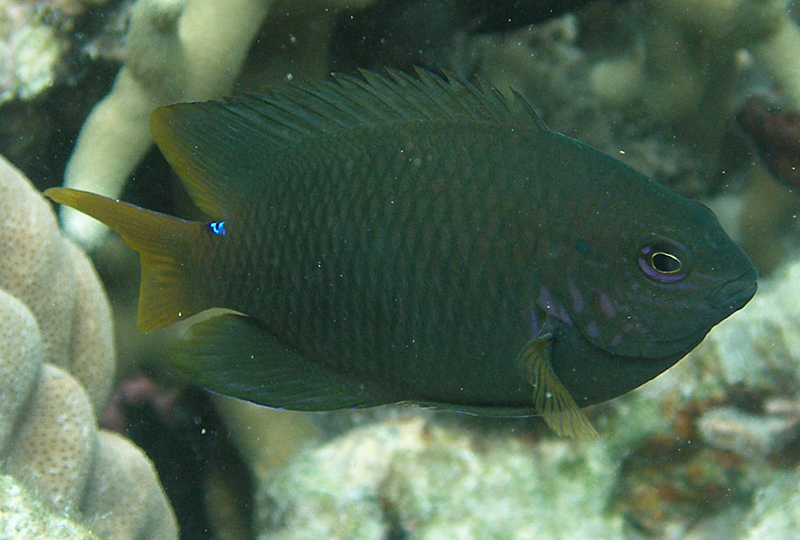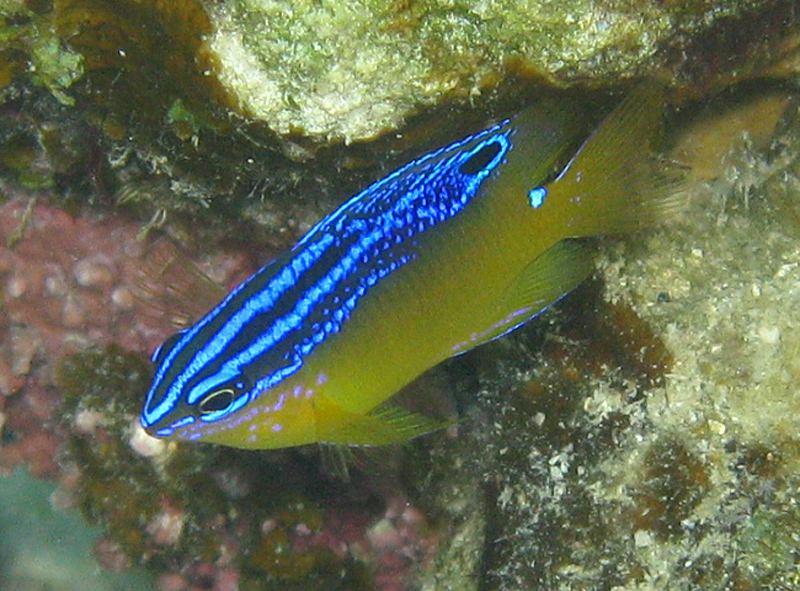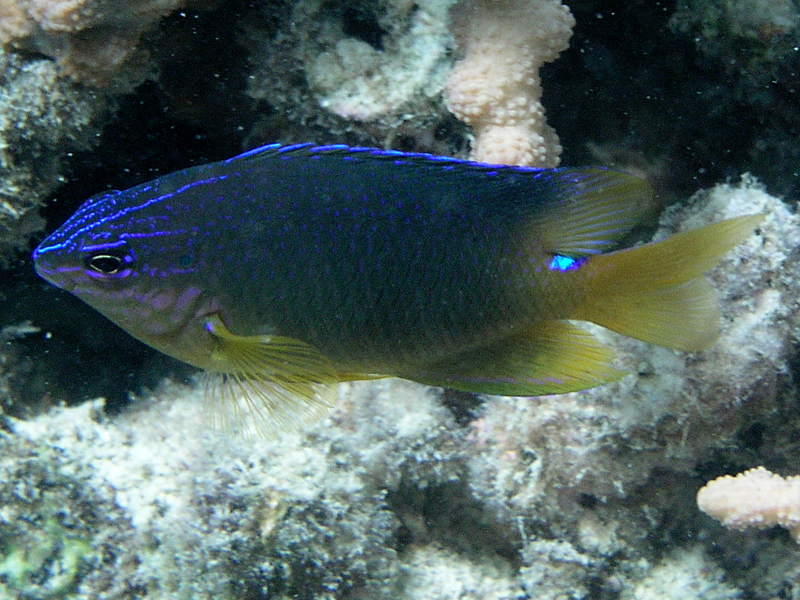
©Andy: An adult Bluespot Damsel showing the distinct purple cheek spots bright blue dot on the caudal peduncle
Colours
Distinguishing features
A small herbivorous damselfish with a dark brown body, and yellowish brown tail. The small juveniles have dark upperparts, a yellow belly, an ocellus on the rear of the dorsal fin, and a series of electric blue lines on the forehead. There is a distinct electric blue dot on the caudal peduncle and pink-purple blotches on the lower cheek which are retained through to the adult stage. Distinguish from the closely related P. wardi adult by the blue dot on the caudal peduncle and pink-purple blotches on the lower cheek, and from the juvenile P. wardi by the thicker blue lines on the head and larger spot on the peduncle.
Size
- Up to 9 cm (Standard length)
Depth range
- From 2 m to 12 m
Synonyms
Distribution
Distribution and habitat preferences
Shallow patch reefs and reef flats with a mixture of hard coral cover and dead corals covered in turf algae. Not found on reef crests.
Behaviour
The Blue spot Damsel is superficially similar to Ward's Damsel in appearance, however the Bluespot damsel is not as abundant, and usually lives in small colonies with a distinct algal farm, as opposed to Ward's damsels which are more widely dispersed and less manipulative of the algal community. The Bluespot is thicker set and dominant to Ward's damsel where the two cohabit, and tend to establish farms near thickets of staghorn Acropora coral, often on the edge of territories of Stegastes lividus. The small juveniles feed on plankton initially, but then soon stake out a territory of their own on the edge of an adult colony, and start to feed on benthic algae.
Web resources
References
- Booth, D.J. and G.A. Beretta (2002). Changes in a fish assemblage after a coral bleaching event, Marine Ecology Progress Series, 245: 205-212. LIRS catalog number 90108.
- Ceccarelli, D.M. (2007). Modification of benthic communities by territorial damselfish: a multi-species comparison, Coral Reefs, 26: 853-866. LIRS catalog number 90110.
- Ceccarelli, D.M., T.P. Hughes and L.J. McCook (2006). Impacts of simulated overfishing on the territoriality of coral reef damselfish, Marine Ecology Progress Series, 309: 255-262. LIRS catalog number 90111.
- View all references


